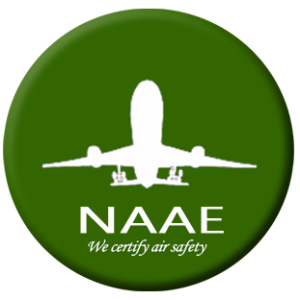

NAAE:
Certifying Air Safety, Promoting Seamless Global Airspace

The developmental paces of technological innovations and the frenzied adoption of emerging technologies in the air navigation services (ANS) and the air traffic management (ATM) domains are, no doubt, pushing back the frontiers of air traffic safety electronics practices, redefining the tasks and responsibilities of air traffic safety electronics personnel (ATSEP) and opening up whole new vistas of opportunities for the modernisation, harmonisation, and sustainable development of the global air navigation system. The National Association of Air Traffic Engineers (NAAE) – the authoritative voice for the professional development of Nigerian ATSEP and an affiliate of the International Federation of Air Traffic Safety Electronics Associations (IFATSEA) – occupies quite an enviable niche among the leagues of professional organisations that strive to promote aviation safety and the competence of aviation safety professionals the world over. Officially registered as a professional association on 10 January, 1992 under the then Companies and Allied Matters Decree No. 1 of 1990 with a body of trustees comprising T.O. Ogunshola, P.A.T. Olley, E. Famuyiro and A.C. Ogbuji, NAAE has recorded quite a huge number of milestones that clearly define the professionalism, resilience, techno-operational efficiency, and integrity that are characteristic of aviation professionals in the Nigerian CNS/ATM (communication, navigation, and surveillance/air traffic management) professional milieu.
A FOCUSED VISION
NAAE’s major vision is strongly wedded to professionalism, competence, efficiency, strategic collaboration, and integrity. These attributes have remained and still endure as the guiding principles of the Association.
“NAAE is a professional association and as such our major vision is to promote safe, efficient, effective, and economic air navigation, particularly in Nigeria,” says Engr. Selzing Miri, NAAE President. “Our major focal point is to uphold a high standard of professionalism in the discharge of our duties. NAAE strives to ensure that its members are competent and that they discharge their duties with high level of professionalism.”
Interactions and collaborations are key to the actualisation of this vision and as such NAAE has adopted a strategy that is premised upon advocacy and symbiotic partnerships.
“We strive to maintain a high standard of knowledge and competence in our members. So, we interact with management to ensure that our members are given the necessary enabling environment through trainings, the provision of necessary tools, and the necessary exposure to emerging technologies in order to be able to discharge their duties creditably,” Engr. Miri continues. “So, we are more focused on ensuring that we are a leading ATSEP body not only in Nigeria but globally in terms of maintaining high level of professionalism.”
DEFINING MILESTONES
The National Association of Air Traffic Engineers has been playing and continues to play leading roles both at the global and regional levels of the air traffic safety engineering sectors. Within the fabrics of the Africa region of IFATSEA, NAAE has been playing a major role in establishing an ATSEP Licensing Template for Africa as the Chair of an ATSEP Licensing Template Task Team that includes Uganda, Kenya, Ghana, and Burkina Faso. NAAE also commands significant presence within the governance framework of the IFATSEA Regional Office’s Research Council, the ARD (Africa Regional Director) Advisory Council and the Africa Region Affiliates Committee (ARAC), which meets bi-monthly to shape IFATSEA Africa’s strategic paths. The ARD office has also entrusted NAAE with the all-important task of conducting research on the impact of radiation on ATSEP working on various CNS/ATM systems.
COLLABORATION AND STRATEGIC PARTNERSHIPS
Collaborations and strategic partnerships are key elements of NAAE’s organisational philosophy. In this direction, NAAE has established and is actively striving to sustain partnerships with industry organisations such as the Nigerian Air Traffic Controllers Association (NATCA), the Aeronautical Information Management Association of Nigeria (AIMAN), and the National Airtraffic Communicators Association of Nigeria (NACAN).
The collaborative retreat involving NATCA and NAAE, which took place in Port Harcourt, Nigeria from 14 to 16 April 2025, actually marked a new era in the annals of NAAE’s strategic partnership drives. Commenting on this forward-looking retreat, Engr. Miri said: “It’s actually a collaborative meeting to strengthen our relationship that has not been too good in the past. So, the Port Harcourt retreat has actually put some hope in the drive to unite the two professional bodies.”
“The major take-home from that retreat is that these two professional bodies have agreed to work together in the interest of the aviation industry, focusing on collaboration in ensuring that the necessary enabling environments are given to members of the associations to discharge their duties creditably,” Engr. Miri adds. “So, the retreat came up with a communique that highlighted some very important points for the management’s consideration. What I can say here invariably is that there is a brighter hope for greater collaboration between the two associations resulting in greater benefits to the aviation industry. What I can also say is that better days lie ahead for both the management of the Nigerian Airspace Management Agency (NAMA) and the two professional bodies as we now have a better working relationship among ourselves.” ◙

All rights reserved. No part of this material or the content of this website may be reproduced or published in any form or by any means without the prior written permission of the publisher.
Contact: atsei@dextermarie.com



